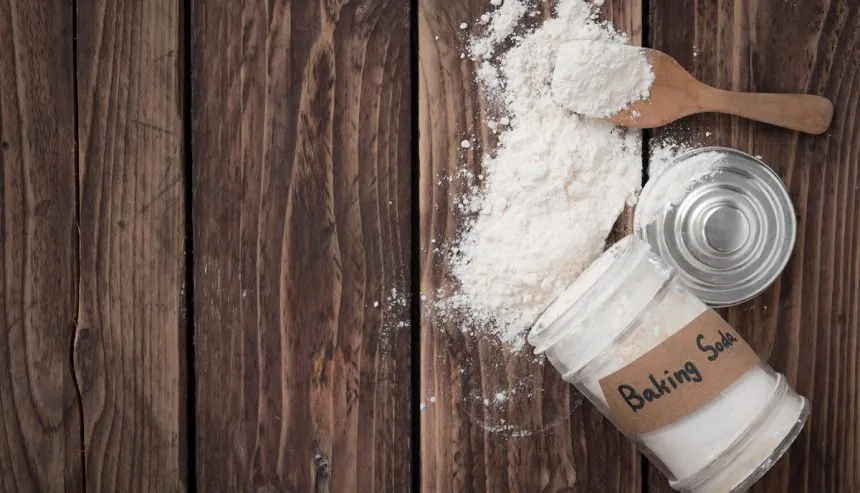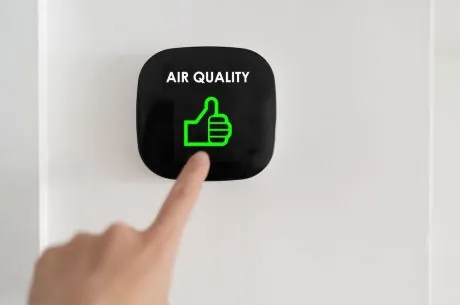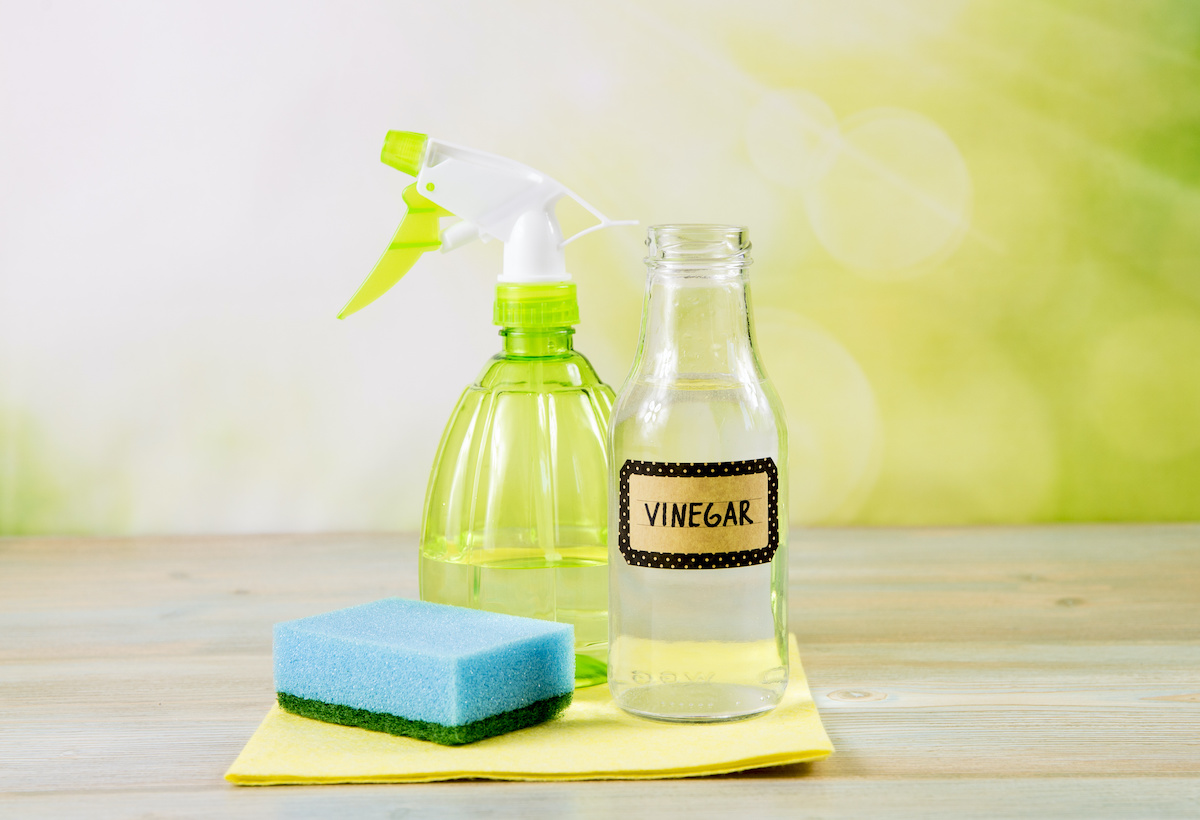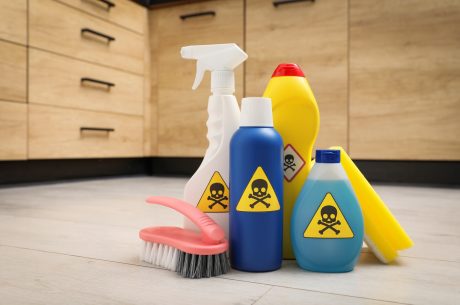Sodium bicarbonate, commonly known as baking soda, is a non-toxic substance with a wide range of applications in cooking, medicine, and personal care. Its versatility also makes it a valuable tool for various cleaning tasks. That’s why we’ve compiled this list on how to clean with baking soda.
In this guide, you’ll learn how to harness the power of baking soda for cleaning purposes. You’ll also find out about the surfaces where its usage should be avoided.
Let’s get started!
How to Clean With Baking Soda
Learn how to clean with baking soda in your home for a fresher, cleaner house.
- Clean general surfaces. Make a paste by mixing baking soda with water until it forms a thick consistency. Apply the paste to surfaces like countertops, sinks, stovetops, or tiles. Scrub gently with a cloth or sponge, and then rinse thoroughly.
- Deodorize sink drains and prevent clogging. Pour ½ cup of baking soda down the drain and let it sit for 1 hour. Then, pour ½ cup of vinegar, wait 5 minutes and rinse with hot water.
- Remove coffee or tea stains from your carpet. Add a bit of baking soda and a little water to the stain. Wait a few minutes, and then wipe it off with a soft cloth or sponge.
- Deodorize the carpet. Sprinkle baking soda over your carpet, leave it on for a few minutes, and then vacuum. Repeat the process if needed.
- Deodorize the litter box. Sprinkle baking soda in the litter box every time you change the cat litter. It will help neutralize the odor.
- Clean the grout. Make a paste with half water, half baking soda and apply the paste to the grout. Leave it on for at least 10 minutes (or 2 hours for very dirty grout), then spray the grout with water. Finally, scrub, rinse and let it dry.
- Boost laundry cleaning. Add ½ cup of baking soda to the usual amount of liquid laundry detergent for one wash. Baking soda helps brighten and deodorize clothing.
- Remove odors from the fridge. Keep an open box of baking soda in the fridge to absorb strong food smells efficiently.
- Clean greasy ovens. Mix 5 tablespoons of baking soda, 4 tablespoons of white vinegar and 5 drops of liquid detergent. Spread the mixture over your oven and let it sit for 15 or more minutes. Use a sponge to scrub the grease away.
- Put out grease fires. Quickly pour baking soda on a grease fire to safely extinguish it.
- Clean drains. Pour 1/2 cup of baking soda down the drain, followed by 1/2 cup of vinegar. Let the mixture foam and work for a few minutes, then flush with hot water.
- Deodorize your shots. Sprinkle baking soda inside shoes to absorb odors. Shake out the baking soda before wearing the shoes.
- Clean jewelry. Create a paste of baking soda and water, then gently scrub your jewelry with a soft toothbrush. Rinse and pat dry.
- Clean your toilet. Sprinkle baking soda into the toilet bowl. Let it sit for a few minutes, then scrub with a toilet brush. Flush to rinse away the residue.
What Not to Clean With Baking Soda
While baking soda is a versatile and useful cleaning agent, there are certain items and surfaces you should avoid cleaning with it to prevent damage or undesirable outcomes:
- Aluminum and Tarnished Silver: Baking soda’s abrasive nature can scratch and dull the finish on aluminum and tarnished silver items. Opt for specific silver or metal cleaners for these materials.
- Nonstick Cookware: Using baking soda on nonstick surfaces can potentially strip away the nonstick coating, rendering the cookware less effective over time. Stick to gentler cleaning methods for nonstick pans.
- Electronic Devices: Baking soda’s fine particles can enter the crevices of electronic devices, causing damage to delicate components. Instead, use appropriate electronics cleaning solutions and tools.
- Glossy Surfaces: Baking soda’s abrasiveness may mar the glossy finish on delicate surfaces like polished granite, marble, or high-gloss furniture. Use appropriate cleaning products designed for these surfaces.
- Natural Stone Countertops: While baking soda can be used to clean some stone surfaces, it’s not recommended for more porous stones like limestone or travertine, as it could scratch or damage them. Opt for stone-specific cleaners.
- Acrylic Bathtubs and Fiberglass: Baking soda’s abrasive quality can scratch and dull the surface of acrylic bathtubs and fiberglass shower stalls. Use mild, non-abrasive cleaners instead.
- Delicate Fabrics: While baking soda can help with stain removal, avoid using it on delicate fabrics like silk or cashmere, as it may damage the fibers. Always check care labels and spot-test first.
- Leather: Baking soda can strip the natural oils from leather, potentially leading to dryness and cracking. Use specialized leather cleaners and conditioners.
- Painted Surfaces: Baking soda’s abrasive nature can remove paint or damage painted surfaces. Stick to gentle cleaning solutions for painted walls or furniture.
- Carpet and Upholstery: Baking soda can be used on carpets and upholstery to absorb odors, but excessive use or rubbing it in can be difficult to fully remove and might lead to discoloration or a powdery residue.
- Stainless Steel Appliances: While baking soda can be used to clean stainless steel, scrubbing with it can potentially scratch the surface. Use a soft cloth and stainless steel cleaner for a safer approach.
Conclusion
Baking soda is a household superhero when it comes to effective and eco-friendly cleaning solutions. Its gentle abrasiveness and odor-absorbing properties make it versatile for tackling various cleaning tasks throughout your home.
However, as with any cleaning product, it’s essential to exercise caution and perform spot tests, particularly on delicate surfaces, to ensure that baking soda doesn’t cause any unintended damage.
Now that you’ve learned how to clean with baking soda, check out more tips to remove household odors and effective ways to keep indoor air fresh. For professional fire, water, or mold restoration services, contact your local PuroClean office.




